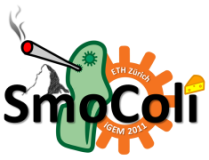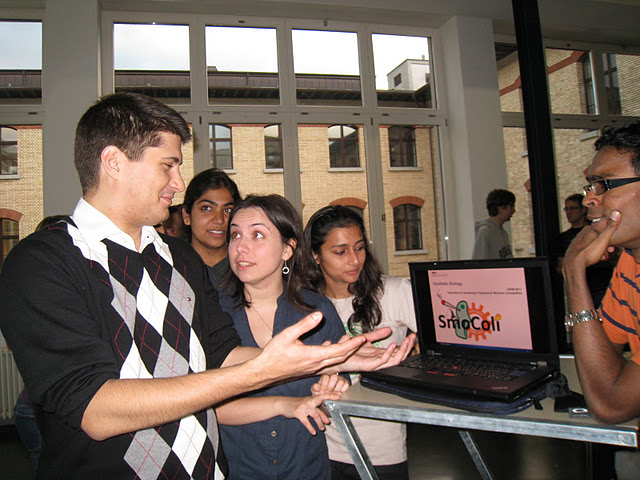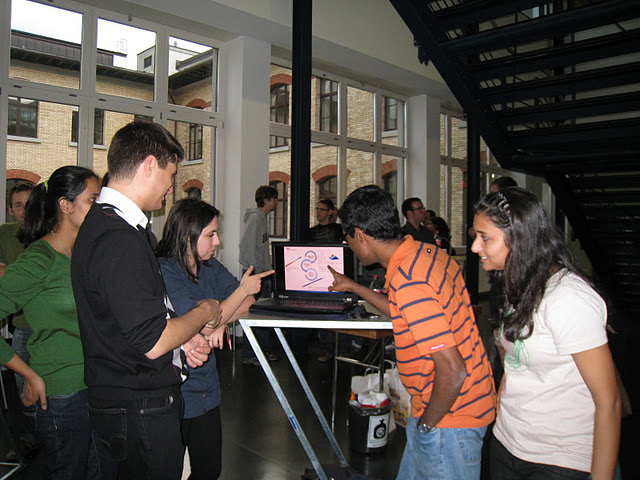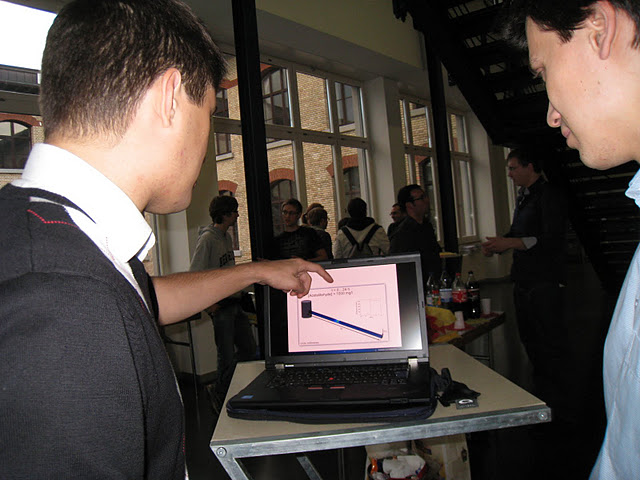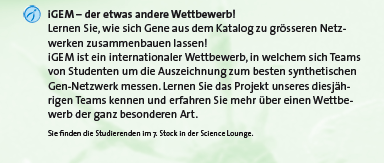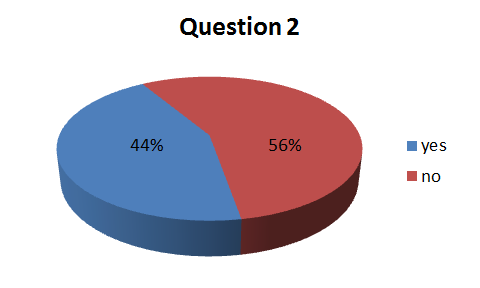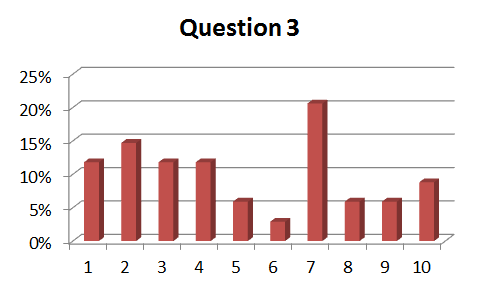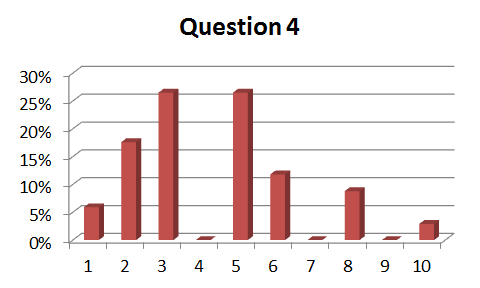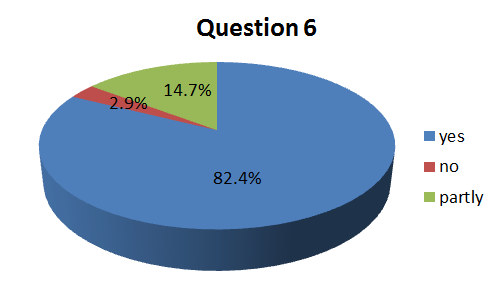Team:ETH Zurich/Team/Human practices
From 2011.igem.org
(→Poster and Discussion) |
(→Survey) |
||
| Line 89: | Line 89: | ||
The first two questions evaluated how many of the persons who filled out the survey were themselves involved or had a family member who worked in an area related to genetic engineering. This is an important question because it allows us to see whether we have a specific bias in our survey, since we postulate that people who work with genetically modified organisms will tend to be more open to synthetic biology. The results showed that slightly more than half of the persons work in genetic engineering which is ideal for us since in this way our following results will not be biased. | The first two questions evaluated how many of the persons who filled out the survey were themselves involved or had a family member who worked in an area related to genetic engineering. This is an important question because it allows us to see whether we have a specific bias in our survey, since we postulate that people who work with genetically modified organisms will tend to be more open to synthetic biology. The results showed that slightly more than half of the persons work in genetic engineering which is ideal for us since in this way our following results will not be biased. | ||
| - | |||
| - | |||
| - | |[[File:Q4ETH.png|thumb|400px|center|'''Figure 2''': People's opinion regarding the risks of Synthetic Biology on a scale from 1 to 10 (1 - no risk, 10 - high risk)]] | + | [[File:Q3ETH.png|thumb|400px|left|'''Figure 1''': People's knowledge of Synthetic Biology on a scale from 1 to 10 (1 - no knowledge, 10 - very good knowledge)]] |
| - | + | ||
| - | + | We were also interested in how much people know about Synthetic Biology. Our results show that although 7 is the most frequent response representing 20% of the total , the responses are widely distributed across the scale. This is again an encouraging result, because it means that we managed to capture the opinions of a wide target group. | |
| + | |||
| + | [[File:Q4ETH.png|thumb|400px|center|'''Figure 2''': People's opinion regarding the risks of Synthetic Biology on a scale from 1 to 10 (1 - no risk, 10 - high risk)]] | ||
| + | |||
|- valign="top" | |- valign="top" | ||
Revision as of 13:30, 23 October 2011
| SmoColi human outreach |
|
Human practice is an important part of iGEM. Synthetic Biology and the idea of a parts registry is not well-established in the general public. It is important to inform people of the potentials, but also the risks of synthetic biology. For our human practice we decided to do several things. On one side we were present with a talk and discussion round at the “CBB come together afternoon” to introduce iGEM to the new master students. On the other side we were present at the Open house day of the department of Bioscience and Engineering (D-BSSE) of the ETHZ to bring SmoColi to public. |
7.10.11 CBB Get together afternoonThe CBB Get together afternoon is an event where students, alumni and professors of the Computational Biology and Bioinformatics (CBB) Master programme at ETH come together and talk about the programme. Every year several senior students of the programm and also several alumni present their experiences and give programme-related advice for their colleagues (primarily for first year students). On this year CBB Get together, Lukas had the honor to talk about his studies and he gave a big highlight on the iGEM competition as one of his most memorable experiences. He talked shortly about synthetic biology and he also introduced our project. After the event, during the "Apero", a lot of first-year students approached us, interested in iGEM and started asking lots of questions. We simply couldn't resist taking out our laptops and presenting our beautiful SmoColi around :)
|
22.10.11 D-BSSE Open houseThe [http://www.bsse.ethz.ch/events/open_house Open House] day of the D-BSSE of the ETH Zurich is a event where scientists show their research to the public. We were also present at the open house day. We presented a Poster, showed our simulations on a computer and did a survey. We used the opportunity to discuss our project with the Basel public and also with other scientists.
Poster and Discussion
Survey
1. Is your profession related to genetic engineering?
2. Does anyone in your family have anything to do with genetic engineering?
3. How would you evaluate your knowledge of Synthetic Biology on a scale from 1 to 10? (1 - no knowledge, 10 - very good knowledge)
4. How high would you evaluate the risks of Synthetic Biology on a scale from 1 to 10? (1 - no risk, 10 - high risk)
5. How much trust do you have in the scientists that do Synthetic Biology on a scale from 1 to 10? (1 - no trust at all, 10 - strong trust)
6. Do you think that a critical discussion for the “Synthetic Biology” issue is possible with the scientists?
7. Could you imagine an implementation like SmoColi in your daily life?
8. Do you think it is justifiable that students make genetically modified organisms for a competition like iGEM?
9. Is the conduction of animal experiments for a competition like iGEM justifiable?
10. Can you imagine how the genetically modified organisms could simplify your life?
In order to get a better understanding of how people feel about synthetic biology, we analyzed the data that we collected during the Open House Day. A total of 34 people filled out the survey, ranging from undergraduate and graduate students, scientists to members of the general public.
| ||||||||||||
 "
"
